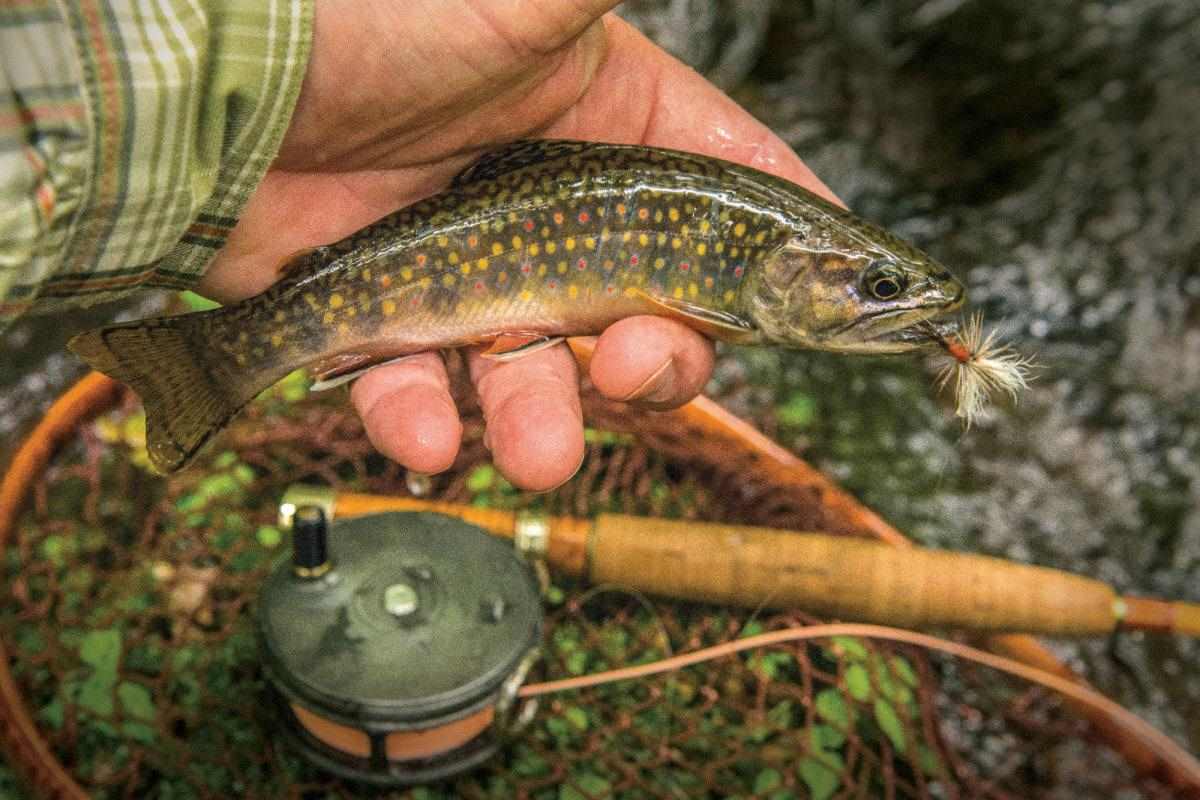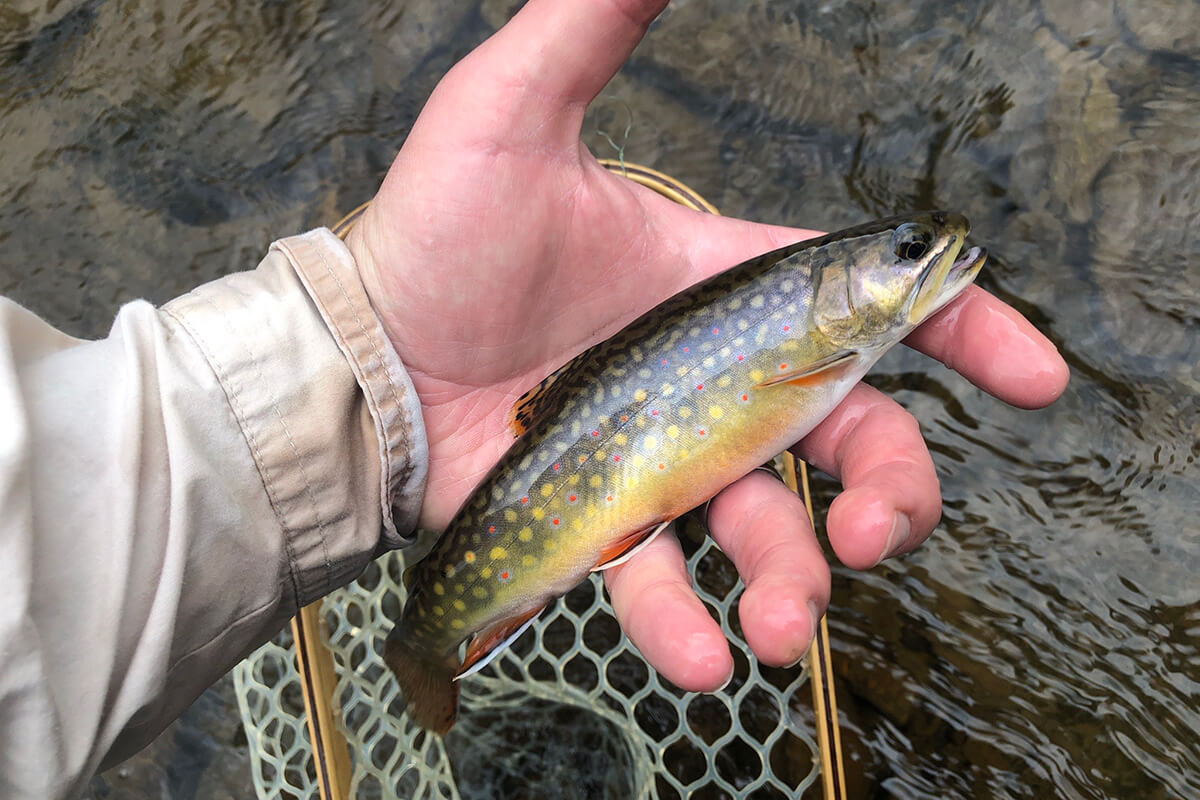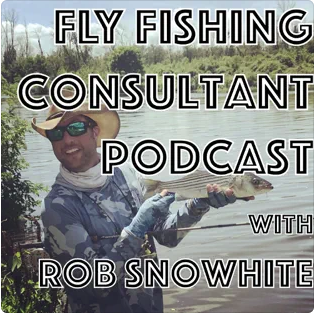silverfox
Well-known member
- Joined
- Oct 4, 2006
- Messages
- 1,928
I agree. Kudos to Bill/LJRA.This is great news and props the Bill A.
I look forward to the results.
I agree. Kudos to Bill/LJRA.This is great news and props the Bill A.
I look forward to the results.
I encourage anyone for or against to attend the meeting and voice their support or concerns.I think the time would be better spent looking for the real cause of the decline of the native brook trout there. Nothing I see indicates wild brown trout are the cause since the decline is also occurring in the section of stream that currently already doesn't have and likely never had any wild brown trout.
I view this project as a "feel good," emotionally-charged project that will have no lasting meaning.
One of the most important angles that will determine success is public engagement. Not my words, but those of an NPS director. The public needs to understand the purpose and value of these projects. Support and sabotage are the major factors to success.I think the time would be better spent looking for the real cause of the decline of the native brook trout there. Nothing I see indicates wild brown trout are the cause since the decline is also occurring in the section of stream that currently already doesn't have and likely never had any wild brown trout.
I view this project as a "feel good," emotionally-charged project that will have no lasting meaning.
One downside is that you could end up with a stream that has no trout.Also by LJRA:
My question is, what is the downside (ecologically speaking) of removing browns? They certainly aren’t helping the brook trout. That’s for dern sure.
Well, you said brook trout still outnumber browns there. So I bet that's highly unlikely. I agree that PFBC should study what's going on with the population there. They're supposed to be doing that anyway. I doubt that's one of the streams they're looking at, but PFBC is supposed to be looking at species dynamics and release a report by Jan 2024. So if they determine brown trout are responsible or partly responsible, then what? Are you on board?One downside is that you could end up with a stream that has no trout.
The horror of one less stream without brown trout! Seriously, setting aside one stream for preservation of the native species is absolutely worth the effort. If you want to fish for brown trout (myself included), LJ is full of them.One downside is that you could end up with a stream that has no trout.
I thought you said it was a bandaid and the brows would just come back? If their just taking out alot but not all browns who cares?One downside is that you could end up with a stream that has no trout.



Yea its attached to possibly the best brown trout stream in all of PA. Its like being near disney land and worrying if they close down chucky cheese in orlando. The fact that there is opposition to this to give our struggling state fish some help is unconscionable.The horror of one less stream without brown trout! Seriously, setting aside one stream for preservation of the native species is absolutely worth the effort. If you want to fish for brown trout (myself included), LJ is full of them.
Did Coolridge Creek have a section (basically a "control" section) where there were no wild brown trout (but had a declining native brook trout population) to compare to the section where both brooks and browns coexisted prior to the eradication of the brown trout?One example:

Long-term population demographics of native brook trout following manipulative reduction of an invader - Biological Invasions
Although laboratory studies have provided evidence for negative interactions between brook trout and brown trout, it is unknown how these interactions affect larger scale demographics in a natural setting. We tested the effects of invasive brown trout on brook trout demographics by removing...link.springer.com
This is not accurate because your leaving out the brook trouts life history. (My podcast could help you). Those brook trout in the one section may be declining because they cannot use the downstream water or lake for a life history element like increasing growth rate, thermal shelter ect. Stream sections are not “controls” because they are part of the same ecological system downstream and infact likely use it. This was the whole basis behind Dr. Shannon Whites novel riverscape genetics study and why PFBC managing streams in sections doesn’t work and why MD WV manage brook trout areas as watersheds in many cases(also covered in the podcast with examples).Did Coolridge Creek have a section (basically a "control" section) where there were no wild brown trout (but had a declining native brook trout population) to compare to the section where both brooks and browns coexisted prior to the eradication of the brown trout?
A long section of BGR has no wild brown trout and yet the native brook trout population is declining precipitously. On the surface your evidence makes it sound like the native brook trout would start to thrive if the brown trout were eradicated in the section that currently has a token population of wild brown trout. I can't see how this would happen when the "control" section of stream shows a native brook trout population in steep decline with no interaction from wild brown trout.
The section with no wild brown trout is above a waterfalls.This is not accurate because your leaving out the brook trouts life history. (My podcast could help you). Those brook trout in the one section may be declining because they cannot use the downstream water or lake for a life history element like increasing growth rate, thermal shelter ect. Stream sections are not “controls” because they are part of the same ecological system downstream and infact likely use it. This was the whole basis behind Dr. Shannon Whites novel riverscape genetics study and why PFBC managing streams in sections doesn’t work and why MD WV manage brook trout areas as watersheds in many cases(also covered in the podcast with examples).
I have never fished it but if that waterfall is indeed completely impassable then its still not a control because one section has access to a lake for a different life history strategy that the one above the waterfall doesn’t. You want a control to be similar and not have drastically different other features.The section with no wild brown trout is above a waterfalls.
My response was what could happen long-term. Time would be better spent searching for the real cause of the problem.I thought you said it was a bandaid and the brows would just come back? If their just taking out alot but not all browns who cares?
Ironically AMD remediation/fixing it tends to hurt brook trout in streams where brook and brown trout can already survive in because the AMD gives the brook trout a competitive edge over the brown trout.My response was what could happen long-term. Time would be better spent searching for the real cause of the problem.
There was a lot of coal mining in the watershed. The rocks in Tubb Run are mostly white and slippery (from aluminum, I believe -- and more so than ten years ago); Bear Loup Run has a couple large orange acid mine drainage seeps running into it; Lloydville Run appears to be getting worse since the AMD reclamation project done in the headwaters appears to be losing its effect; and Shaw Run has always had an intermittent AMD trib. These are the places I would look first.
I'm well aware of this. My concern is that maybe for some reason it is getting progressively worse and will wipe out all trout.Ironically AMD remediation/fixing it tends to hurt brook trout in streams where brook and brown trout can already survive in because the AMD gives the brook trout a competitive edge over the brown trout.
This study is proof that this is very common. Cleaning up AMD in a sympatric invasive brown/native brook stream without removal of invasive brown trout doesn’t work. Evidence below, minute 10ish in the video is where this is confirmed.
That's a matter of opinion. Some conservationists would say that a stream with no friends is one virtually no one will care about. And those friends are usually fishermen. Fishing and conservation go hand in hand in my opinion. That's why the PFBC can't just be just a conservation organization. Just like hunting and conservation. Without hunting I doubt that the Pennsylvania Game Commission would own and be preserving over 1,500,000 acres in the state.One thing you have to realize is from a conservation standpoint a stream with no trout is better than a stream with brown trout( even though that won’t likely even happen). Invasive brown trout harm darters, crayfish, and other species besides brook trout. Again its not a fishing project, thats the ENTIRE rest of PA, its conservation.
Conservation is protecting species and ecosystems. Invasive species decrease species diversity and harm ecosystems native ones do not. Friends are great if they fight for ecosystem function and protect native species crucial to that function. Of friends just propagate an invasive species for social reasons its a social cause not a conservation one because species richness/biodiversity suffers.That's a matter of opinion. Some conservationists would say that a stream with no friends is one virtually no one will care about. And those friends are usually fishermen. Fishing and conservation go hand in hand in my opinion. That's why the PFBC can't just be just a conservation organization. Just like hunting and conservation. Without hunting I doubt that the Pennsylvania Game Commission would own and be preserving over 1,500,000 acres in the state.
I recently quit a Facebook group that was dedicated to one of the PGC's State Game Lands when the conservation jihadist who runs the page posted an anti-hunting message. I couldn't help but laugh at the hypocrisy.
By the way, native brook trout also harm darters, crayfish and other species. They also eat invasive brown trout.
To be effective, it would help if the state openly supported it, participated in it, explained why it's necessary, and then reinforced it with angling regulations and signage. Put up signs prior to electrofishing removal, remove the fish, put up new signs explaining the project, make ST C&R, and no limit or mandatory removal of BT post reclamation.Conservation is protecting species and ecosystems. Invasive species decrease species diversity and harm ecosystems native ones do not. Friends are great if they fight for ecosystem function and protect native species crucial to that function. Of friends just propagate an invasive species for social reasons its a social cause not a conservation one because species richness/biodiversity suffers.
While native brook trout may eat some of the species you mentioned they do not harm their populations. They evolved with these creatures and these creatures evolved defenses. Example: Eastern Hellbender can chemically detect native brook trout not invasive brown trout and rainbow trout. These amphibians have a defense against predatory brook trout as larval hellbenders that they do not against the invasives. This is called coevolution and it is what make’s ecosystems function, organisms stay in their lanes.
Lastly there is no such thing as conservation of an invasive species because what you are trying to promote harms the entire ecosystem and decreases species richness. Brown trout have invaded almost all suitable habitat on planet earth and have destroyed countless populations of native fish and are ranked as top 30 worst invasive species on our planet out of 4-5000. Like cow manure, mine drainage, and deforestation they are just another impairment to be mitigated when your goal becomes conservation instead of political(use of word jihadist) or social(fishing).
This is not my opinion its how national parks service, fisheries scientists at universities, and other professional conservation practitioners operate. They do this because of mountain’s of research and data. It all says they same thing, invasive brown trout need to go in the VERY few places we actually manage for conservation in this country. If any of us had to go to the emergency department because we had crushing chest pain and couldn’t breath we would listen to the cardiologist because we know their the subject matter expert and our best shot at walking out of there alive. When it comes to conservation there are also these subject matter experts who have studied for decades and devote their entire lives to this because of their passion and dedication to these fish. I think we all know either out right or in the back of our minds that they are our best shot for brook trout making it out of the 21st century alive in PA but its not our butt on the line so we medal for selfish reasons.
The removal in bells gap may not be the most effective means or been planned by these fisheries scientist’s, but it ultimately is based on the undeniable fact that invasive brown trout harm our state fish and this removal has a very good chance to benefit them or at least keep them around until we can clean up the invasive brown trout impairment for good in bellsgap.
I agree, but I think those concerns could be overcome. Signage before the removal, public engagement by LJRA (which they're already doing) and PFBC (more importantly), education about why it's a worthy project, signage post-reclamation that informs people that the project happened, why, and why reintroducing BT is bad. Finally, it would be great to have regs in place to encourage the harvest of BT post-reclamation. Possibly even allow no-limit harvest of BT there.The second paragraph in #38 immediately above contains practical elements that in my view would perhaps explain why an agency, group, or individual might possibly not invest time in such an effort while it might invest in another.
